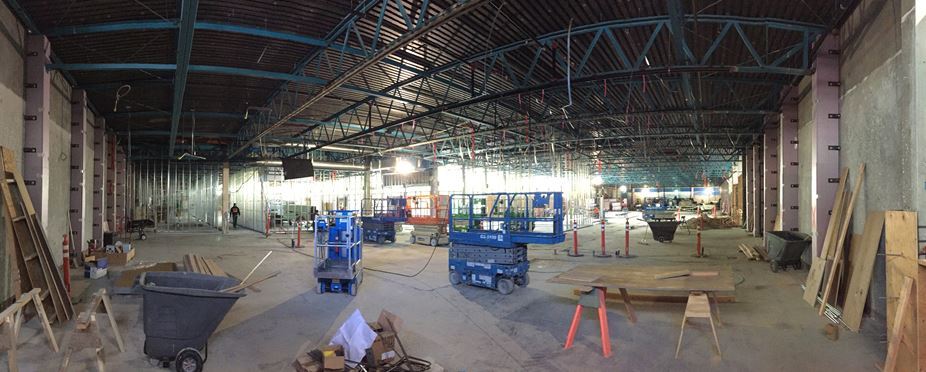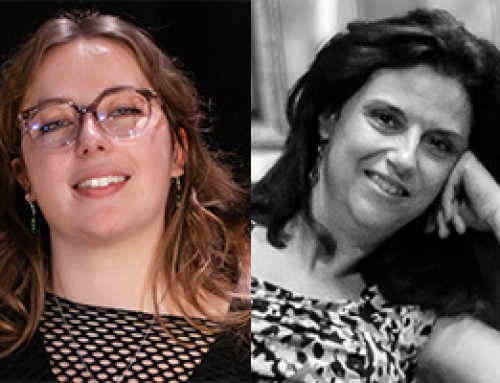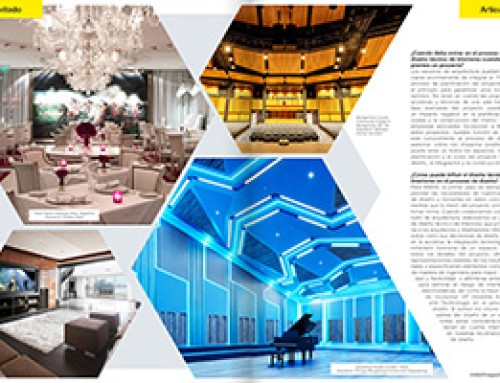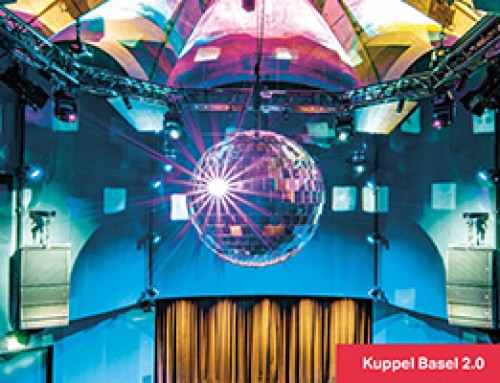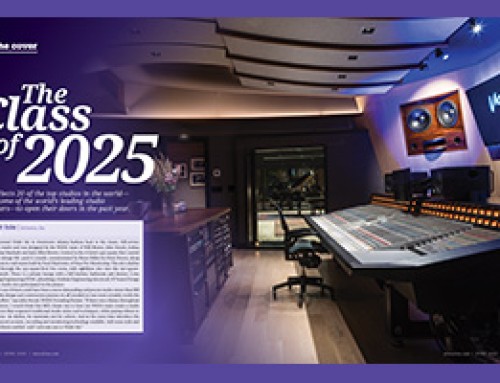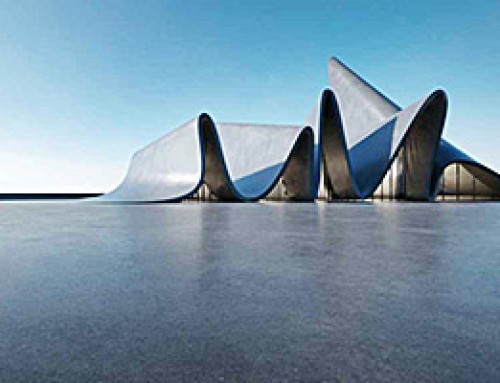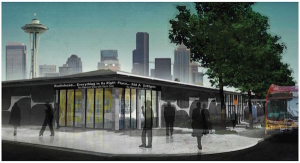
A concept view featuring the KEXP music library, northwest corner
Come December, noncom educational station KEXP(FM) will begin broadcasting from new quarters in Seattle’s lower Queen
Anne neighborhood, space originally designed for the 1962 World’s Fair. It is moving from its current location in the South Lake Union area. We reached out to find out more about its facility move and recent activities at the station. Answering are General Manager of the Broadcast Service Ethan Raup, Chief Financial Officer Denise Burnside, Chief Technology Officer Jamie Alls and Senior Director of Programming Kevin Cole, who also is an on-air host.
RW: The station has an interesting history dating to 1971 that is beyond the scope of this Q&A; but briefly describe the station today.
Raup: KEXP is more than a radio station. KEXP is a dynamic arts organization that provides rich music experiences on the air, online and on the streets. KEXP’s unique services benefit three distinct groups: music lovers, artists and the arts community.
KEXP’s curatorial staff of 40 DJs, who are widely recognized as experts in their field, present the newest emerging popular artists alongside established bands. KEXP’s programming features both variety and specialty shows that brings you the emerging sounds and long-time favorites from the Pacific Northwest, the country, and throughout the world.
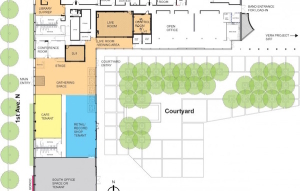
Station floor plan
More than 200,000 listeners from around the world tune in to the station each week over the air and online. On KEXP’s YouTube channel, videos of exclusive in-studio performances garner more than 1.7 million views per week. KEXP produces over 500 live performances each year.
KEXP is an affiliate of the University of Washington and a 501(c)3 non-profit arts organization. It is governed by a 16-member board of directors.
RW: Where does KEXP plan to move, and when?
Raup: KEXP plans to move to the campus of the Seattle Center in Seattle’s lower Queen Anne neighborhood. We will move into what had been the Northwest Rooms, designed by noted architect Paul Thiry for the 1962 World’s Fair. Construction is underway with attention paid to preserving the original details, such as the exterior concrete panels. KEXP expects to start to move into the building in late fall, 2015 with the first broadcast scheduled for December. The building will open to the public in the spring of 2016.
RW: What is Seattle Center?
Raup: Seattle Center was originally built for the 1962 World’s Fair. It is a 74 acres in lower Queen Anne that includes open space, arts and entertainment facilities, Memorial Stadium (home to The Seattle Reign women’s professional soccer team), The Space Needle, The Experience Music Project and vibrant non-profits, such as VERA, SIFF and Seattle Children’s Theater.
RW: KEXP has been hoping for this move for some years. Briefly summarize the history.
Raup: KEXP moved to its current studio on Dexter Ave North in Seattle’s South Lake Union neighborhood in 2001. At 6,300 square feet, the studio at Dexter was ideal for KEXP for the next 10 years. However, as the station evolved to include over 400 in-studio performances each year, many with video, along with an array of local events and programming, it became clear that a larger facility that was centrally located and able to fully open to the public was needed.
In 2010, the city of Seattle opened a process to look at a couple of different spaces on the Seattle Center campus, including the Northwest Rooms and the former Children’s Fun Forest. KEXP saw that as an opportunity to explore a partnership with the city. The Northwest Rooms ultimately worked, as it has 28,000 square feet — enough to include a more public interior performance space as well as a gathering space that will include a café and record store, as well as easy access for bands to load and an ability to connect well both with the Seattle Center campus and the lower Queen Anne neighborhood.
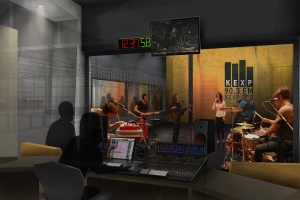
Live performance space
RW: What is the total budget and how much have you raised? Some government grant money didn’t come through as planned, is that correct?
Burnside: The full vision for KEXP’s New Home at the Seattle Center represents a $15 million project, which is our overall fundraising goal. As of July 14, 2015 we have raised 76% of our goal, or $11.3 million. The fundraising campaign will continue through June 2016 a few months after our grand opening in April. The vast majority of support for the project comes from our faithful KEXP listener community. Individual donors — 5,700 and counting — make up the largest piece of the fundraising puzzle. We were fortunate, however, to also receive a grant from the state of Washington through the Building for the Arts program. Earlier this year funding for the program was in question, but when the state legislature finalized its budget planning on June 30, the funding for Building for the Arts had been fully restored. The grant amount for the New Home project is $1.866 million.
RW: You refer on your website to a “sublessee” plan; what does that mean?
Burnside: KEXP is opening itself up to the public, so we created an open and welcoming gathering space for folks to come throughout the day. We are pairing music discovery and enjoyment with a few sub tenants to bring the enjoyment of coffee, food, beverages and record shopping.
RW: Describe the scope of the technical job.
Alls: KEXP is kind of an odd beast in that we support a wide array of activities related to music discovery. Our core business is radio, and the DJ booth is basically the center of the facility. But around that we’re building capacity for producing more than 500 performances per year. We’ll also have a public-facing music venue, and will need to be able to capture and post content from that stage as well. With more than 3 million views on our YouTube channel, we needed to dedicate more space to video production and post production than we could in our present facility.
The rooms that support all of this include two on-air studios, two large production studios (one serving double duty as a mastering suite) capable of hosting multiple guests, two each small audio editing and video editing suites, a live video control room, a live recording studio and audio control room with sound proof viewing for 75 people. In addition, we’ll have a stage in a café area with front-of-house position and pathway for supporting an outside stage in an adjacent Seattle Center courtyard. DJs will get a space in the library for previewing music and for the first time KEXP will have a librarian who will oversee additions to our music collection and manage the tools we use for curation. Our operations will consume all 28,000 square feet of the building.
We worked with Walters-Storyk Design Group to help design systems and acoustic spaces that would accommodate the various activies. We really wanted all of the spaces where we are doing critical listening and mixing to have the right mix position, and acoustic qualities to create the best possible mix. You don’t want to have to fight the room to get a good mix, especially in a new facility. Our budget was such that we needed to come up with creative ways to accomplish the level of quality desired. WSDG worked to understand our program to really zero in on the acoustic needs of each space. The DJ booth for example is fully isolated with a floating floor, etc. But we realized that part of our culture at the station is hearing the live bands warm up and crank the amps. The live room didn’t need that level of isolation, but we still wanted an acoustically versatile space.
RW: Who is the lead technical manager?
Alls: Denise Burnside is project managing the entire new home project. I am the chief engineer, and along with our Production Manager Chris Kellogg responsible for design and installation of the technical spaces.
RW: Is new broadcasting equipment part of the plan, or will you move what you have?
Alls: Our present facility was built about 15 years ago and we’ve never had an equipment refresh, so repurposing our present consoles, etc., wasn’t really an option. New equipment is the plan.
The core system in the plant will be Wheatnet-IP for a facility-wide audio over IP solution and consoles. The scope does not include the transmitter facility, but we will upgrade our STL and backups.
RW: What is the biggest technical obstacle or problem that must be overcome?
Alls: For the technical spaces the biggest obstacle has been working with two moving targets: schedule and budget. When we started the project, it was basically going to be a fire drill because we had 15 months to raise the money and build the facility before our current lease expired. Fortunately, we found another 12 months and were able to revisit some design decisions along the way that ultimately saved us money. A good example of that was using Wheatnet-IP and the consoles for intercom rather than investing in a relatively expensive purpose built solution.
The budget also evolved over time, so keeping track of which plan and which budget was currently operative was a challenge. You find yourself revisiting problems that were solved differently in a different iteration of the project scope and budget, and second-guessing some of your initial decisions.
Fortunately, some of the worst-case budget scenarios did not come to pass. And with a recent influx of funding from the state, we will be able to build out our full vision for the facility, but within the same timeframe. It’ll be a push to fit the new scope into the current timeframe but well worth the effort to build what our original vision was.
Another challenge will be the adoption of a new media asset management platform, digital library and on-air play-out system. We are in the midst of a Dalet Galaxy deployment, so in conjunction with getting DJs and staff acquainted with the new building, we’ll also be training them on new systems and workflows. We’re going from a station that plays CDs and LPs 24/7, and that’s run on spreadsheets and ingenuity, to a public facing arts organization that’s utilizing state of the art, file-based curation and workflow tools.
RW: What else might others want to know about this project?
Alls: Part of what makes KEXP unique is the fact that we have live DJs 24/7 and don’t use radio automation tools. One challenge when selecting an asset management solution was finding one that provided some of the broadcast workflow features we wanted, while allowing us the flexibility on the radio play-out side of the house. We needed to craft a solution that would work for DJs who want to mix every crossfade by hand. It’s remarkable that making radio play-out software do less, while still having some advanced integration features has been one of the biggest challenges.
RW: KEXP has been playing up the benefits of the move for music lovers; and music discovery seems to be a growing aspect of programming for some public stations. Tell us more.
Cole: KEXP’s mission is to enrich lives by championing music and discovery. We exist to help people discover music — on-air, online and in person.
We do this on-air with our curated music mixes featuring the best new music alongside the seminal and important music that influenced and inspired the new music, taking listeners on a rich musical journey.
Online we help people discover new music through all our curated content including our podcasts, blog features and the videos of our live sessions. KEXP hosts more exclusive live sessions than any other station I’m aware of. In 2014 over 520 artists played live on KEXP. We record these live sessions and publish videos of these performances for music lovers all over the world to discover and enjoy. At present we have more than 350 million views of KEXP videos on our YouTube channel!
With our new facility we’re excited about how we can use the physical space itself for people to have music discovery experiences. We’re going to open the doors to KEXP and let people experience firsthand the inner workings of our arts organization. In the plans are workshops led by our expert DJs, music related exhibits and public viewing of our live in-studio performances.
See photos of the planned facility by clicking on the construction photo below.
